As employers gear up for open enrollment season, many are attempting to reduce the amount of paper notices they distribute. Both employers and employees appreciate the move away from paper and toward electronic media. At the same time, certain health plan notices are required under federal law so employers should be sure their distribution methods are compliant.
Following are frequently-asked questions we receive from employers about electronic distribution of health plan notices at open enrollment:
1. What does electronic distribution mean?
Electronic distribution refers to delivering information in soft copy or electronic media instead of paper copies. Examples include emails with attached materials or emails that include links to materials posted on a website. Flash drives and computer disks containing copies of plan materials are other examples.
The U.S. Department of Labor (DOL) provides guidelines for electronic distribution of health plan notices. Generally, notices must be distributed in a manner that reasonably ensures the employee receives the material. It is not sufficient to merely post materials online or offer other media without actually delivering them to the employee.
2. What are the guidelines for electronic distribution?
The DOL guidelines distinguish between employees with work-related computer access and other employees.
First, notices may be distributed electronically to employees who regularly access the electronic media, such as the company’s email system, as part of their regular job duties. For instance, notices can be sent by email, with return-receipt request, as long as the email explains the significance of the material. Employers are advised to periodically confirm that materials are received by checking for bounced emails or using other methods to confirm emails reach employees.
Next, electronic distribution also can be used for persons who do not meet the “regular work-related computer access” standard but only if the individual provides consent. The rules for obtaining consent are burdensome so many employers prefer not to use electronic distribution for such employees. Instead, employers distribute paper copies either by first class mail to employees’ homes or by in-hand delivery at work.
In addition to employees whose jobs do not involve regular computer access, there also will be COBRA beneficiaries and employees away from work on leave for whom electronic distribution may not be feasible.
3. If the guidelines are met, what types of health plan notices can be distributed electronically?
The DOL guidelines for electronic distribution apply to a wide range of required health plan notices and disclosures, including:
- Summary Plan Description (SPD)
- Summary of Material Modification (SMM)
- Notice of Marketplace Coverage Options (Exchange Notice)
- HIPAA Special Enrollment Notice
- Benefit summaries, such as evidence of coverage (EOC) booklets and certificates
At open enrollment, the HIPAA notice and benefit summaries explaining the employee’s choices are distributed. Other items, such as SPDs, SMMs, and the Exchange Notice, also may be included although they are not required during each year’s enrollment season.
4. Can the HIPAA Notice of Privacy Practices (often called the Privacy Notice) be distributed electronically?
The Privacy Notice does not have to be distributed during open enrollment. Instead the required timeframes are:
- At the time of the employee’s initial enrollment (such as at hire);
- Upon the individual’s request;
- Within 60 days of a material change in the content of the Notice; and
- At least once every three years the plan must distribute a reminder that the notice is available (or distribute the full notice again).
Although not required, some employers choose to include the Privacy Notice with open enrollment materials. It can be distributed electronically but the conditions are a little more restrictive than for other types of benefit notices. That is, individuals must affirmatively consent to receive the notice electronically, including consenting to any hardware or software requirements, and acknowledging that consent may be withdrawn at any time.
In any case, if the plan maintains a website describing services and benefits, the full Privacy Notice must be posted there in addition to distribution to individuals.
5. What about the Summary of Benefits and Coverage (SBC)? Can it be distributed electronically?
Yes, SBCs can be distributed electronically if using appropriate methods. The usual DOL guideline for electronic distribution is a little less strict for SBCs. For instance, if enrollment is conducted exclusively online, the SBC can be provided electronically.
Otherwise, for employees currently enrolled and who use a computer as part of their regular job duties, the SBC can be sent to that computer (or it can be posted and a notice sent explaining how to access it and how to request a paper copy at no charge). For employees not currently enrolled, it is sufficient to post the SBC online as long as persons are notified of its availability. Many plans send a brief postcard or email to meet the notice requirement. The DOL provides model language for this purpose (refer to question 12).
In summary, distributing benefit plan notices at open enrollment using electronic media offers many conveniences to both the employer and employee. Eliminating unnecessary paper copies helps save money and protects the environment. At the same time, employers need to ensure their distribution methods comply with federal rules.
Find out more how we can help automate the on boarding paper process.



